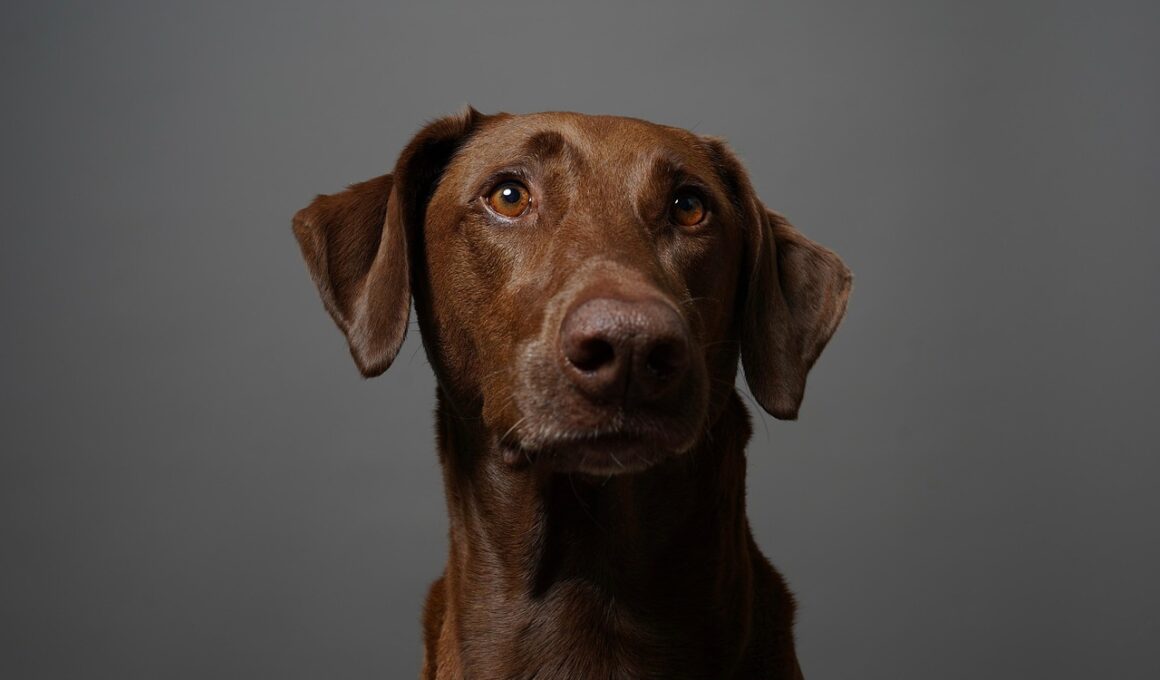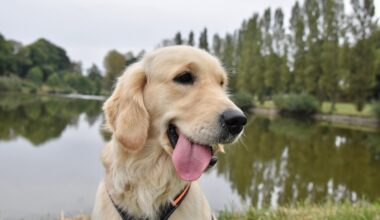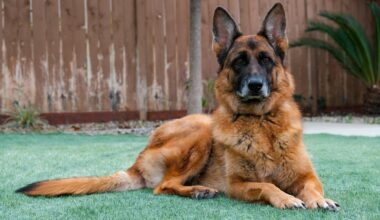Using Natural Light Vs. Studio Light in Dog Portraits
Dog photography is an art that requires not just technical skill, but also an understanding of lighting techniques. When capturing portraits of dogs, photographers have a choice between natural light and studio light. Natural light offers a softer, more organic look, which can beautifully highlight a dog’s fur texture and unique features. Outdoor settings, whether in parks or backyards, provide ample opportunities to utilize differing angles and intensities of sunlight, creating enchanting effects. Additionally, dogs often appear more relaxed outdoors, enhancing their candid behavior. However, taking photographs in natural light can be time-sensitive, as the quality of light varies significantly throughout the day, especially during golden hour. On the flip side, studio lighting allows for consistent, controlled conditions, establishing a backdrop that enhances focus on the subject. Although studio setups might initially seem less daunting, mastering effective lighting configurations remains crucial for ideal results. In pursuing your dog photography endeavors, consider both natural and studio lights, weighing the effects on your artistic vision and the capabilities of your equipment. In this discussion, we will explore both options in detail.
The Advantages of Natural Light
Natural light is undoubtedly one of the most appealing choices for dog portraits. It offers many advantages that can dramatically enhance the quality of your photographs. Firstly, natural light creates a warm ambiance that resonates with the essence of outdoor environments, making it ideal for capturing pets in their element. Secondly, the varying textures that light offers throughout the day can add depth and dimension, highlighting your dog’s features exceptionally. When shooting during golden hour, you can capture portraits that glow with golden hues, adding a magical touch. Moreover, natural light is free and accessible, removing the need for expensive lighting equipment and studio spaces. While shooting in natural light, you’ll also notice that dogs appear more relaxed, producing more candid and genuine expressions. This relaxed atmosphere often leads to spontaneous moments that can result in stunning shots. However, it’s essential to be mindful of the weather conditions, as overcast skies can act as natural diffusers while bright sun can create harsh shadows. Properly choosing the right time and location can significantly impact the success of your portraits with natural light.
The Challenges of Natural Light
While natural light has its set of advantages, it also comes with challenges that photographers must navigate. One primary concern is the consistency of light; the varying intensity throughout the day can result in vastly different exposures. A bright midday sun can create harsh shadows, which may not be flattering for your dog’s features. Additionally, the weather can be unpredictable, causing sudden changes in lighting conditions, which can make planning difficult. For outdoor shoots, it is vital to recognize the impact of location, as trees and structures may cast shadows that affect your photographs. Furthermore, bright sunlight can sometimes lead to squinting or discomfort in pets, affecting their willingness to cooperate. Photographers must also consider background distractions that can divert attention from the subject. Wide-open spaces could alter the focus intended for the dog you are capturing. Therefore, it’s crucial to scout locations beforehand ensuring you’ve considered these factors. Understanding these potential challenges can help you prepare and adapt your shooting strategies, maximizing the outcome despite the limitations natural light might present.
The Benefits of Studio Light
Studio light offers several benefits to dog photographers looking for control and creativity. One of its premier advantages is the ability to create consistent lighting conditions, ensuring your portraits maintain the same quality throughout shooting. Controlled environments allow for fine-tuning of shadows and highlights, perfecting the image quality without the uncertainty faced outdoors. Additionally, photographers have access to a wide array of lighting gear, such as softboxes and reflectors, which help mitigate harsh shadows and illuminate your dog evenly. With studio light, there’s also the potential for creative experimentation. Utilizing colored gels, you can introduce vibrant backgrounds and moods that can transform ordinary sessions into uniquely artistic portraits. Unlike outdoor environments, studios allow photographers to compose their scenes, ensuring backgrounds complement the subject effectively. Professional studios typically provide a great deal of versatility in terms of backdrop options, posing, and spacing. However, it’s essential to keep in mind that just because studio lighting is easier to control doesn’t replace the need for accurately balancing settings, as improper knowledge can still lead to poorly lit photos.
Considerations for Studio Light Set-ups
When opting for studio lighting in dog photography, numerous factors can influence how successful your setup will be. For instance, before beginning a shoot, it’s vital to understand the type of lights you intend to use. Softboxes can provide that soft lighting which is essential for maintaining your pet’s delicate features while minimizing harsh reflections. Additionally, the distance between the lights and your dog can have a dramatic effect on the outcome; too close can create unwanted glare, while too far can leave your images flat. It’s also necessary to consider the angles of your lights; positioned at different heights and angles can create appealing shadow effects and dimension. As dogs are often unpredictable, keep treats and toys handy to encourage them to look into the camera. Make sure you have enough space for them to move comfortably and not become anxious. Ultimately, achieving beautiful portraits is about striking that ideal balance of light, composition, and patience. Understanding how to manipulate elements within the studio will enhance not only your technical skills but also showcase the spirit of every pup.
Combining Both Lighting Techniques
Dog photographers can achieve remarkable results by harmoniously combining natural and studio lighting techniques. Utilizing the strengths of both methods allows you to capitalize on their benefits while minimizing potential drawbacks. For example, you can begin your photoshoot outdoors, taking advantage of the vibrant colors and natural expressions in a relaxed setting. Once you feel you have captured those delightful candid moments, you can transition to a controlled indoor environment where studio lighting is implemented, thus elevating the artistic quality. This hybrid approach empowers photographers to create a flexible workflow; outdoors, they can showcase the dog’s personality and energy while indoors, they can focus on capturing finely detailed portraits. Adapting to both environments provides opportunities for each shoot to feature a diverse range of compositions. However, blending both techniques necessitates an understanding of exposure balance. Carefully transitioning from outdoor conditions to studio constraints should be smooth, ensuring that your camera settings are appropriately adjusted to maintain cohesion among the images. Continuously refining your style may provide the ultimate combination of natural charm and studio professionalism in dog portraits.
Final Thoughts and Best Practices
Ultimately, whether choosing natural light or studio lighting, mastery of techniques can lead to stunning dog portraits that capture the essence of these beloved pets. Each approach brings nuances that photographers can strategically utilize to enhance outcomes. It’s imperative to familiarize yourself with the unique characteristics of dogs; recognizing when they feel most at ease impacts the vibrancy of your portraits. Planning your shoots around time, weather conditions, and mood can make a significant difference in energy captured through your lens. Wherever the shoot takes place, utilizing natural light or professional studio lighting means an understanding of exposure, depth of field, and composition to get the best results. Experimentation is essential; don’t shy away from trying new styles, setups, or venues. Seek feedback and continuously educate yourself regarding both photography and your subject. A combination of knowledge, instinct, and creativity forms the foundation for impactful dog photography. Engage clients with compelling stories that accompany each portrait, allowing the spirit and personality of their dogs to shine through, ultimately creating images that resonate for years to come.


